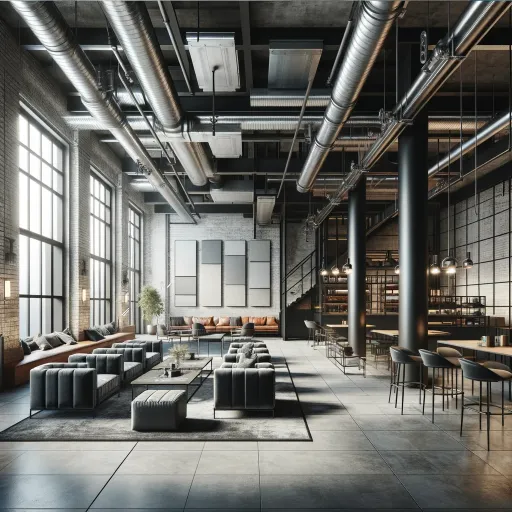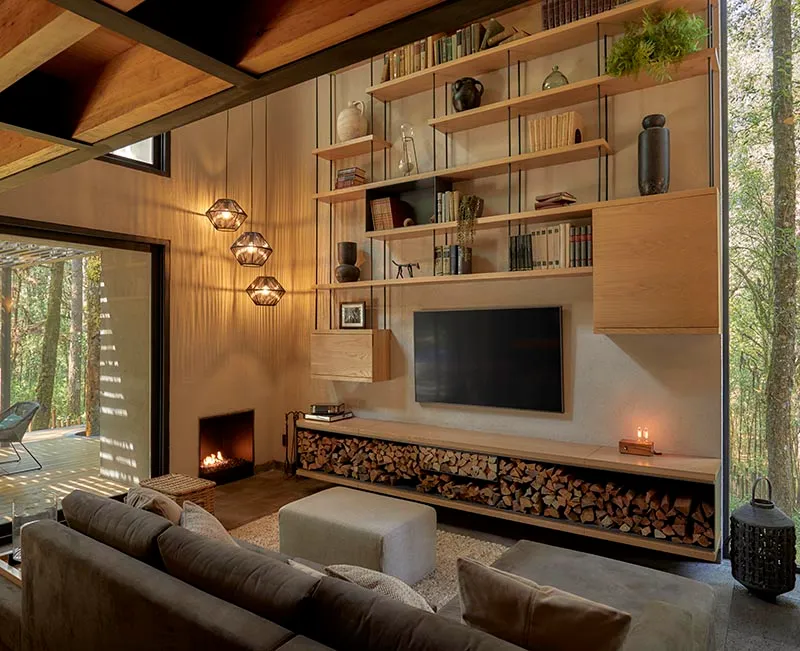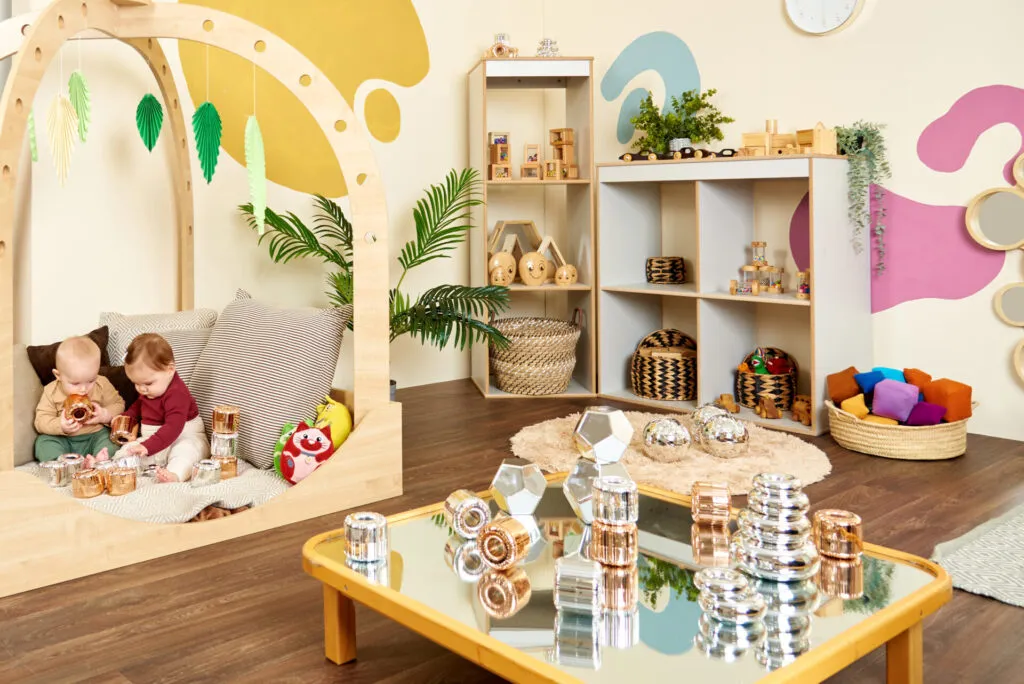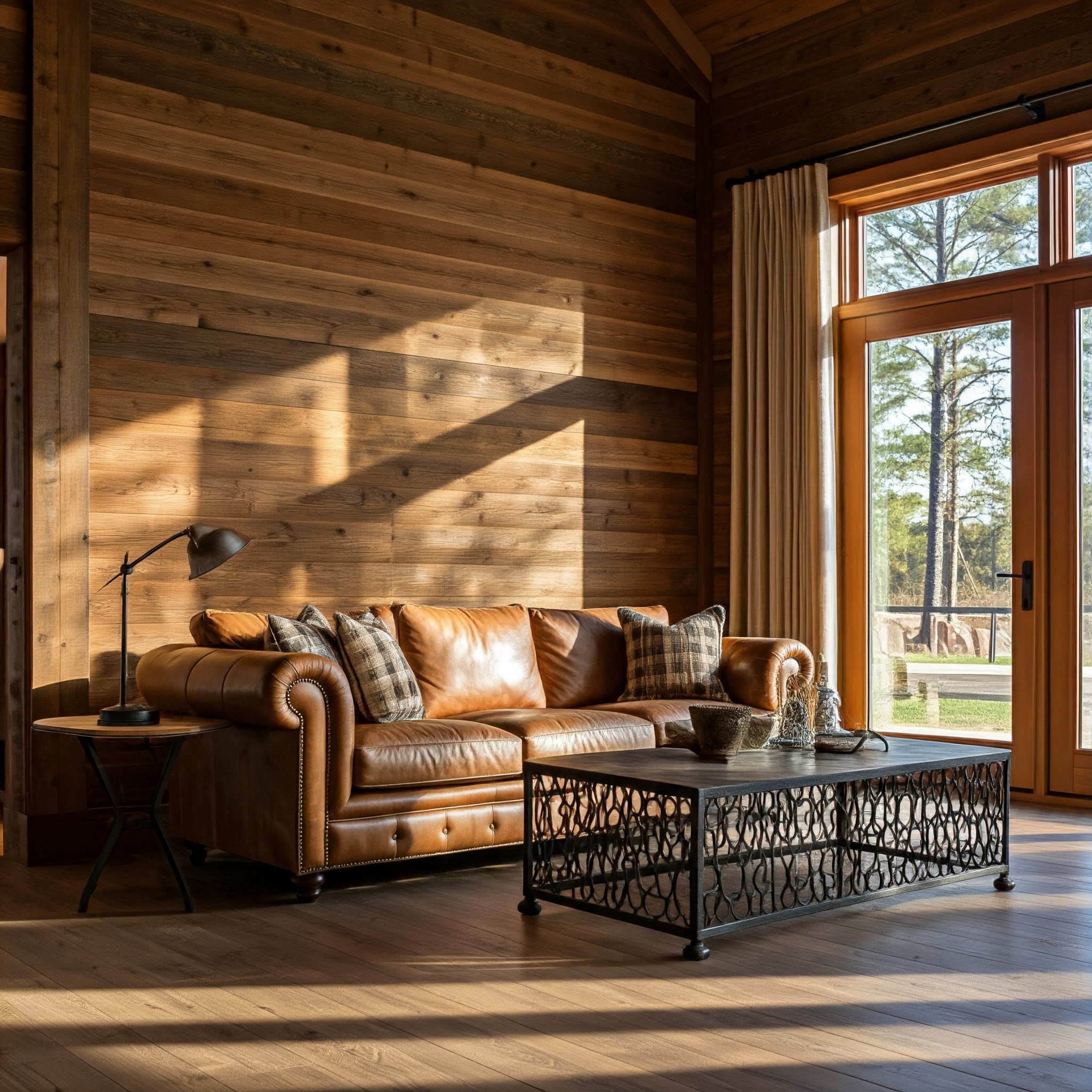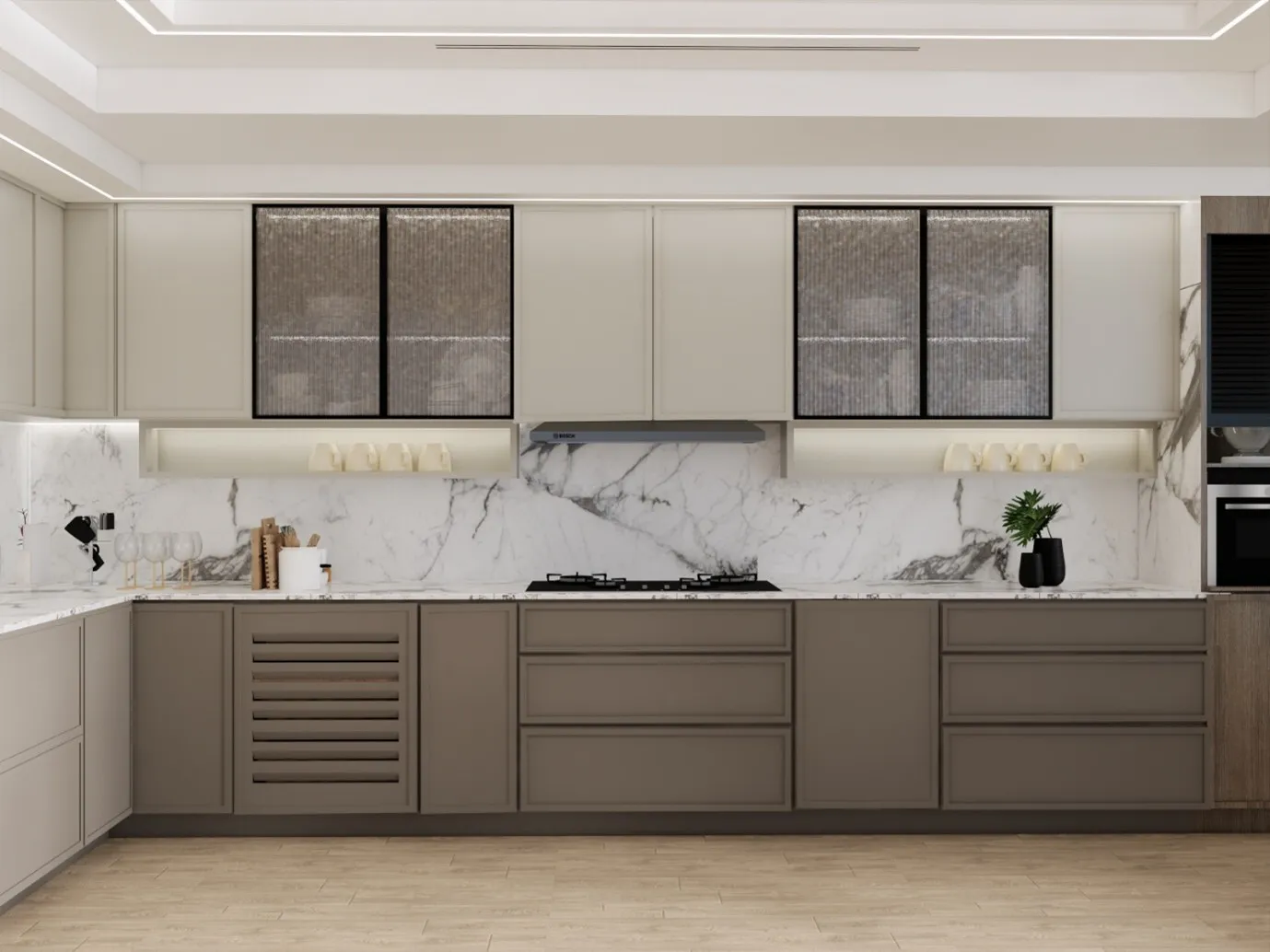Ever happened space that felt both rugged and stylish, with a sense of raw authenticity that captivated your attention? Or maybe you’ve dreamt of transforming your office or home into an open, modern space with exposed brick walls, steel beams, and minimalist decor? If you’re nodding along, then industrial interior design may be just the style you’re looking for. In a city known for its innovative architecture and luxurious lifestyle, industrial design is gaining immense popularity, blending contemporary flair with utilitarian charm. But how can you make industrial design not just about looking cool but also ensuring it serves your space functionally? And what challenges should you be ready to overcome when bringing the industrial look to life? This blog will explore the best industrial interior designs, offering insights into overcoming common design problems, and helping you create a space that’s both stylish and practical.
1. Understanding Industrial Interior Design
1.1 What is Industrial Interior Design?
At its core, industrial interior design is all about showcasing the beauty of raw materials and structures. Think of it as an aesthetic born from factories, warehouses, and lofts, where functionality reigns supreme, but beauty is found in the unfinished, unpolished features. It involves exposed brick walls, steel beams, concrete floors, and large open spaces, which together create a sense of grandeur and openness. Unlike other design styles, industrial design celebrates the “imperfections” – like visible pipes and ducts, rough wood surfaces, and steel frames.
The style is an intriguing fusion of modern, vintage, and urban influences. You’ll find elements that hark back to the past, such as antique furniture or reclaimed wood, paired with sleek modern touches like minimalist lighting and contemporary furnishings. It’s a versatile style that works across residential, commercial, and hospitality spaces, giving them an edgy, yet cozy vibe. The idea is to blend form with function, offering spaces that are both aesthetically pleasing and highly usable. International interior design companies master this balance flawlessly.
Key Points to Remember
- Raw materials, exposed structures, and open spaces define industrial interior design.
- A fusion of modern, vintage, and urban influences makes it both trendy and timeless.
- The style works well in homes, offices, cafes, and even retail spaces.
1.2 Why is it Gaining Popularity?
The architectural landscape is constantly evolving, with cities embracing a more eclectic mix of traditional and contemporary designs. The industrial style fits perfectly into this modern urban fabric. Cities are home to expansive commercial developments, chic cafes, and ultra-modern residential complexes – all of which benefit from the industrial look’s clean lines and practicality. The spacious, open-plan designs often associated with industrial interiors reflect the growth and desire for multi-functional spaces.
Moreover, the penchant for luxury and innovation doesn’t exclude industrial interiors. High-end residential spaces and corporate offices are increasingly adopting this design style, incorporating refined industrial aesthetics with high-end materials and cutting-edge technology. The demand for industrial spaces is rising, as both businesses and individuals seek to create environments that balance creativity with professionalism, comfort with style.
Key Points to Remember
- Evolving architecture aligns with the industrial design style’s principles.
- The demand for industrial spaces is rising in commercial, residential, and hospitality sectors.
- High-end industrial spaces blend raw materials with luxury finishes to create unique environments.
2. Common Problems People Face in Industrial Interior Design
2.1 Challenge 1: Balancing Aesthetic and Functionality
One of the main struggles people face with industrial interiors is achieving the right balance between the rugged aesthetic and a functional, comfortable living or working space. The raw, unfinished materials that define the industrial style – like exposed brick, steel, and concrete – can sometimes create a cold or harsh atmosphere. Without the proper adjustments, the space may feel unwelcoming or impractical.
However, it’s crucial to maintain the industrial aesthetic while also creating a warm, inviting environment. The key is in how you integrate furnishings, lighting, and accessories. Without careful consideration, even the most beautiful industrial design can feel uncomfortable, especially in spaces like homes or offices that need to feel cozy or productive.
Key Points to Remember
- Industrial spaces can feel cold without the right balance of style and comfort.
- Striking the balance between aesthetics and function requires thoughtful design choices.
- Layering in elements that soften the rawness, like textiles and warm lighting, can make a huge difference.
2.2 Challenge 2: Overcoming the Limited Color Palette
The industrial design style often gravitates toward a neutral color scheme dominated by shades of gray, black, white, and brown. While these tones can create a sleek and sophisticated look, they may limit creative expression or feel monotonous in some spaces. The challenge, then, is how to add interest, depth, and personality without deviating from the industrial aesthetic.
Choosing complementary colors or accessories to break up the monotony can be tricky. Too many bright colors may clash with the industrial vibe, while too few can make the space feel dull. The trick is to add subtle pops of color through textiles, artwork, or metallic accents, creating an overall balance between understated elegance and lively personality.
Key Points to Remember
- The neutral color palette in industrial design can feel limiting.
- Adding color through artwork, furniture, or accessories can bring warmth and vibrancy to the space.
- Metallic finishes or textured wallpaper can complement the industrial tones while enhancing the overall design.
2.3 Challenge 3: Maintaining an Open, Spacious Feel
Industrial designs are known for their expansive, open layouts. However, achieving this open, airy feel while maintaining a practical, livable layout can be challenging. It’s easy for spaces to feel overcrowded or cluttered with too much furniture, accessories, or partitions. Balancing the spacious feel without sacrificing functionality or comfort is a key challenge.
Key Points to Remember
- Open-plan designs can become overcrowded without careful planning.
- Transparent or minimalist furniture, light materials, and clear sightlines help maintain the spacious effect.
- Avoiding too many partitions or heavy furniture ensures the space remains open and inviting.
2.4 Challenge 4: Dealing with Noise and Acoustics
The very materials that define industrial design, such as concrete floors, steel beams, and open ceilings, can also amplify noise. In both residential and commercial spaces, excessive sound can disrupt the atmosphere, making the environment uncomfortable or difficult to focus in. Achieving the right acoustics can be tricky, especially in large, open spaces.
Key Points to Remember
- Industrial materials can increase noise levels, disrupting the atmosphere.
- Acoustic panels, rugs, and heavy drapes can absorb sound without compromising the design.
- Soft furnishings and strategic layout planning help mitigate noise issues.
2.5 Challenge 5: Integrating Modern Technology with Industrial Elements
As technology advances, the need to incorporate smart systems, lighting, and entertainment setups into interiors has grown. However, industrial design, with its raw and exposed materials, may make it difficult to integrate these modern technologies seamlessly. The key is to incorporate high-tech systems without disrupting the industrial look.
Key Points to Remember
- Blending modern technology with industrial design requires creative solutions.
- Hidden or modular tech elements, like built-in speakers or concealed wiring, can maintain the aesthetic while offering functionality.
- Smart lighting and automation systems can be integrated without detracting from the raw industrial look.
3. Solutions to Overcome Industrial Interior Design Challenges
3.1 Balancing Aesthetic and Functionality
To balance industrial aesthetics with functionality, begin by introducing softer elements. Think plush rugs, comfortable cushions, or fabric-covered chairs. These textiles help add warmth and texture, offsetting the coldness of concrete or metal surfaces. Multifunctional furniture is also a great solution. Storage units that double as seating or tables that serve as display surfaces can reduce clutter while remaining practical. Lighting plays a critical role too – statement pendant lights or industrial sconces can provide both ambiance and functionality, creating a warm, inviting glow.
Key Points to Remember
- Soft furnishings, multifunctional furniture, and effective lighting can balance industrial aesthetics with comfort.
- Focus on integrating warm textures, such as textiles, to soften the hard edges of the space.
- Thoughtful lighting and furniture choices ensure the space is practical and welcoming.
3.2 Enhancing the Color Palette
To break the industrial color monotony, consider adding bright pops of color through accents like pillows, throws, and art pieces. An accent wall painted in a bold color, or one made from textured wallpaper, can bring visual interest. Metallic accents – gold, copper, or brass – can complement the industrial tones and add a touch of glamour.
Key Points to Remember
- Pops of color through accessories and accent walls add warmth and personality.
- Metallic finishes can create contrast while still fitting within the industrial style.
- Subtle patterns and textures in fabrics or wallpaper create depth and interest.
3.3 Maintaining an Open, Spacious Feel
To avoid overcrowding, keep furniture minimal and opt for floating or transparent pieces. Glass tables, light frames, and open shelving help to keep sightlines clear, making the space feel open. Declutter frequently, keeping only the essentials and ensuring each item has a purpose.
Key Points to Remember
- Transparent or minimalist furniture helps maintain openness.
- Decluttering and using light, airy materials create a spacious environment.
- Clear sightlines and open shelving enhance the feeling of space.
FAQs
How do I make an industrial space feel warm?
Incorporate soft furnishings like rugs, cushions, and throws, as well as warm lighting. These elements can soften the hard edges of industrial design and make the space feel more inviting.
Can industrial design work in a small apartment?
Yes! Industrial design can work in smaller spaces by focusing on minimalist furniture, open shelving, and light materials to create an airy, spacious feel.
Is it possible to mix industrial with other styles?
Absolutely! Industrial design blends well with modern, vintage, and even rustic styles. By carefully selecting furniture and decor, you can create a harmonious mix that feels cohesive.
How much does it cost to implement an industrial design?
Costs vary depending on space size, materials, and the level of customization. For smaller spaces, you might expect prices to start from around AED 50,000, with higher-end projects exceeding AED 200,000.
